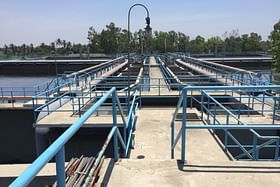Once operational, the treatment plants are expected to recycle 2,464 million litres (MLD) of sewage daily.
In addition to meeting the city’s high water demand, the treatment will reduce water pollution levels and support the revitalisation of the city’s Mithi and Oshiwara rivers.
The long anticipated projects for sewage treatment plants in Mumbai are finally set to move forward by the Brihanmumbai Municipal Corporation (BMC).
The series of revival and development projects were initially proposed by the BMC in 2009, however, were delayed in execution due to several issues of environment clearances, political hindrances, land constraints and stringent treatment norms.
It took the civic body 14 years to acquire the necessary approvals from the Ministry of Environment, Forest and Climate Change and the Central Pollution Control Board for the updated discharge standards.
On 19 January 2023, Prime Minister Narendra Modi carried out the launching ceremony for the seven sewage treatment plants (STPs) in the city.
Further, the upgradation of the treatment facilities received an allocation of Rs 2,792 crore for 2023-2024 in the BMC Budget.
During his speech for the BMC Budget, Iqbal Singh Chahal, municipal commissioner, said, “One of the biggest achievements of the civic body this year has been able to bring this project back on track. Once the seven STPs are fully operational, we will be able to bridge the gap of demand and supply of Mumbai’s water usage.”
An STP is a facility that purifies sewage water by removing contaminants, treating it to be suitable for release into water bodies.
The treated discharge helps to prevent the spread of toxicity and pollution, which can have a harmful impact on water quality, river ecosystems and surrounding habitations and regions.
To mitigate the water pollution in Mumbai, the proposed treatment plants are at Worli, Dharavi, Bandra, Versova, Malad, Ghatkopar and Bhandup. Together they can treat 2,464 million litres (MLD) of sewage daily under the Mumbai Sewage Disposal Project-II (MSDP-II).
The treatment plant at Dharavi will have the highest capacity of 418 MLD. At present, the Colaba STP, as the pilot project, treats wastewater to the required standards before allowing it to be released into the nearest water body.
In February 2022, the BMC had to scrap the tenders released for the treatment plants on receiving 30-70 per cent higher bidding prices, above the estimates.
The Supreme Court directed the civic body to award tenders to eligible lowest bidders before 31 May 2022. Following this, the BMC finalised contractors for construction and maintenance of these STPs with the estimated cost at Rs 25,998 crore.
Mumbai is one of the busiest cities and has a population of over 12.5 million, with a high demand for usage, drainage and treatment of water regularly.
BMC supplies 3,850 million litres of water to the city every day. After usage, 75 per cent of the water is released into lined and underground sewerage system. The city’s old sewerage networks covers only 60 per cent of the areas.
With the proposed development, BMC is in process of laying new lines to cover maximum settlements.
Many areas of informal habitations and slums lack the required drainage network and are illegally connected to storm water drains and creeks.
As specified, the revival of the treatment plants will be able to recycle 2,464 MLD. This allows 64 per cent of the total water supplied, to be treated and be reused for non-potable purposes.
Mumbai is surrounded by the sea and creeks from three sides. Presently, most of the industrial and domestic waste are disposed untreated into these natural water bodies, through sewage pipelines and storm water drains.
The STPs will support the required capacity to treat the sewage water before it is discharged into water bodies.
In addition to meeting the city’s high water demand, the treatment will reduce water pollution levels and support the revitalisation of the city’s Mithi and Oshiwara rivers and smaller water bodies.


